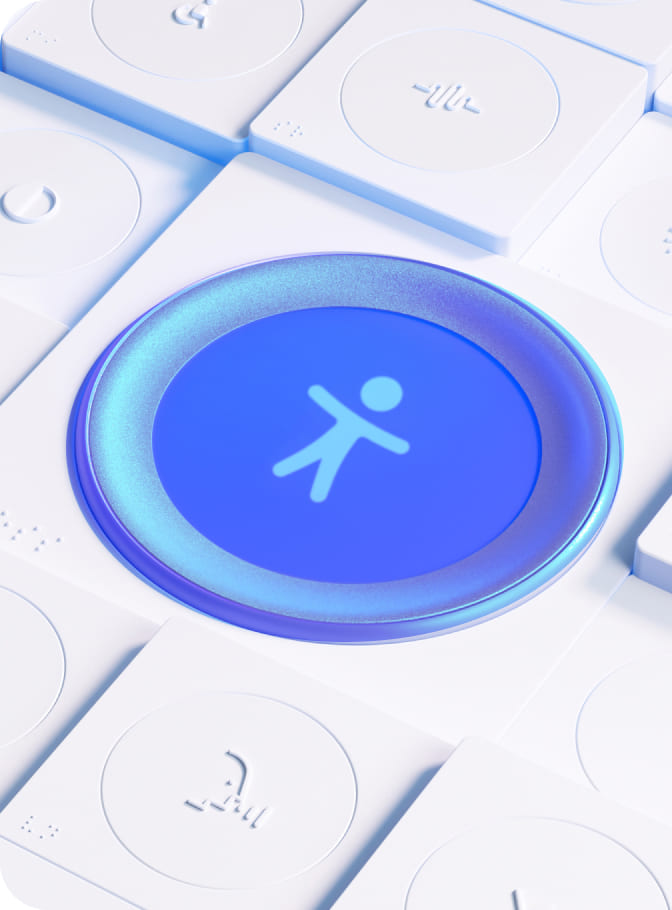Celebrating people with neurodivergent minds

Did you know that around 15-20% of the global population demonstrates some form of neurodivergence? That’s a significant segment of society made up of people who are neurodivergent, reminding us of the rich array of unique ways people experience, perceive and connect with the world. These are differences that are worthy of acknowledgment and celebration.
In the spirit of this celebration, this blog pays tribute to Neurodiversity Awareness Month, a dedicated time to honor individuals with neurodivergent conditions such as autism, ADHD, and dyslexia.
It’s a moment to celebrate the diversity of human cognition and the potential that lies within neurodiverse minds. We’ll also explore the different facets of neurodiversity with a specific focus on the connection between neurodiversity and digital accessibility.
But first let’s explain the meaning of neurodiversity…
What is Neurodiversity?
Neurodiversity is the concept that differences in brain function and behavioral traits are normal, natural differences within the human population. It suggests that conditions like autism, ADHD, and dyslexia are not disabilities, but rather part of the broad spectrum of human diversity, emphasizing that all ways of thinking and processing the world have value and should be respected. Think of neurodiversity as recognizing and celebrating everyone’s ability to think differently, acknowledging that our minds are as unique as our fingerprints.
What are examples of neurodivergent conditions?
Neurodivergence covers a range of conditions that reflect the diversity in how our brains operate and experience the world. Below are examples of neurodivergent conditions, each highlighting different aspects of cognitive and sensory processing:
- Autism Spectrum Disorder (ASD): This condition impacts behavior and communication, presenting a broad spectrum of challenges and abilities. Those with ASD might find socializing difficult and often have intense interests or engage in repetitive actions.
- Attention Deficit Hyperactivity Disorder (ADHD): Characterized by patterns of inattention, hyperactivity, and impulsivity that affect functioning or development. Those with ADHD may struggle with organization and staying focused, but may also be highly creative and able to think outside the box.
- Dyslexia: A learning disorder known for causing difficulties with reading, spelling, and writing. Despite the challenges in these areas, many people with dyslexia excel in problem-solving, creative thinking, and spatial reasoning.
- Dyspraxia: Dyspraxia affects physical coordination and can cause clumsiness and trouble with tasks requiring fine motor skills. It doesn’t affect intelligence, though individuals may excel in verbal skills and innovative thinking.
- Tourette Syndrome: A neurological condition marked by involuntary, repetitive movements and sounds known as tics. The condition varies in severity but does not impact intelligence. Many individuals with Tourette Syndrome possess unique talents and strengths, particularly in areas requiring divergent thinking.
What is the difference between neurodiversity and disability?
Neurodiversity and disability are terms that often intersect but carry their distinct meanings and implications.
While neurodiversity celebrates the unique wiring of our brains, disability casts a wider net. Disability is a discussion on the challenges and barriers that come when our bodies or minds face hurdles in everyday activities. It’s less about the condition and more about how society’s setup can sometimes create roadblocks.
So, while neurodiversity focuses on brain differences as just another part of the human experience, disability tackles how those differences (and more) interact with the world around us.
Neurodiversity is a chapter in the bigger book of disability, pushing us to rethink our world to accommodate everyone.
Unfortunately, there are still areas that fail to do a good job of accommodating neurodiverse people. One significant example is the web. There are still all too many digital spaces that are inaccessible, acting as barriers to people who are neurodiverse. They do not cater to the diverse cognitive abilities of users, which is why it’s vital to hold the microscope over accessibility.
Does accessibility include neurodiversity?
Although the two concepts might not seem connected at first glance, a closer look reveals a major intersection between digital accessibility and neurodiversity.
Putting the spotlight on neurodiversity and digital accessibility is important to creating digital spaces that are accessible and user-friendly, regardless of the ways in which individuals comprehend information and interact with technology.
Here are 7 tips to making digital spaces more welcoming for neurodiverse people:
1. Educate yourself (and others)
Researching neurodiversity will give you an understanding of the spectrum of neurological conditions and their impact on digital interactions. Start by engaging with the experiences of neurodivergent people to deepen your understanding and to gain insight.
2. Audit your digital content
Conducting a thorough audit of your digital assets (websites, apps) for accessibility barriers is a crucial step. Utilize accessibility assessment tools to identify issues like poor color contrast, lack of keyboard navigation, or missing alt text for images. Take the appropriate steps to remediate the accessibility errors and remember, improving accessibility is not a one-time task but an ongoing process. As technology and user needs evolve, so must your approach to digital accessibility.
3. Implement accessibility features
Adding features such as alternative text for images, closed captions for videos, and options for users to adjust text size and background colors can make a significant difference. Always be mindful to avoid overwhelming the user as they navigate your site.
4. Push for inclusive design
Encourage user-friendly designs focused on website accessibility to boost the user experience. Focus on creating designs that think about everyone, including using ideas that make sure neurodivergent people are considered right from the start.
5. Host workshops or webinars
Organizing educational events on neurodiversity and digital accessibility can spread awareness and activate community engagement. Choose advocates with lived experience or expert knowledge in the area of neurodiversity.
6. Support the neurodivergent community
A good strategy is to partner with neurodiversity advocacy groups or to feature guest posts on your platforms. Discuss the importance of representation in all stages of content creation, from design to dissemination, and the positive effects of showcasing diverse experiences and solutions.
7. Commit to ongoing improvement
Acknowledge that digital accessibility is a dynamic area, with evolving standards and user needs. Seek feedback on your site’s UX from users. Engage with accessibility and compliance experts to gain insights as you commit to meeting accessibility standards.
By following these tips, you can provide a holistic understanding of how to honor neurodiversity through digital accessibility, making sure your digital offerings are welcoming to everyone.
Neurodiversity Awareness Month: A long-term commitment
While we mark Neurodiversity Awareness Month, it’s vital to remember that recognizing and celebrating the unique ways neurodiverse individuals interact with the world isn’t just a once-a-year obligation. It’s a continuous commitment.
This time serves as a reminder for all of us to actively work towards understanding the distinct needs of neurodiverse communities, especially in the world of digital accessibility.
By addressing the gaps in inclusivity across your online platforms, you can dismantle barriers, and build digital spaces that are accessible to everyone, regardless of their neurological makeup.
UserWay: celebrating neurodiversity in online spaces
UserWay stands at the forefront of accessibility and inclusivity, providing businesses and individuals with tools to build a better, more inclusive web. From our cutting-edge AI-driven solutions to full accessibility audits and monitoring, organizations globally turn to UserWay to shape their digital platforms in user-friendly and accessible ways – for everyone, regardless of their ability.
Answers to Common FAQs
What makes an individual ‘neurodivergent’?
In simple terms, someone might be called neurodivergent if they find out they have conditions like ADHD or autism, if they just feel like they fit the description or assessments in a professional setting suggest this. Recognizing neurodivergence opens doors to understanding, support, and embracing the unique strengths it brings.
Are neurodiverse individuals considered in accessibility measures?
Yes, neurodiverse individuals are considered in accessibility measures, which aim to accommodate a wide range of cognitive and neurological differences in environments and technologies. Of course we can do more! And, with the right web accessibility tools, this can be made a reality.
What do neurodivergent people struggle with?
Neurodiverse individuals might struggle with overwhelming sensory inputs, like flashing animations or autoplay videos, complex navigation systems that are hard to follow, and densely packed text without clear headings or visual breaks, making online experiences challenging.




Share